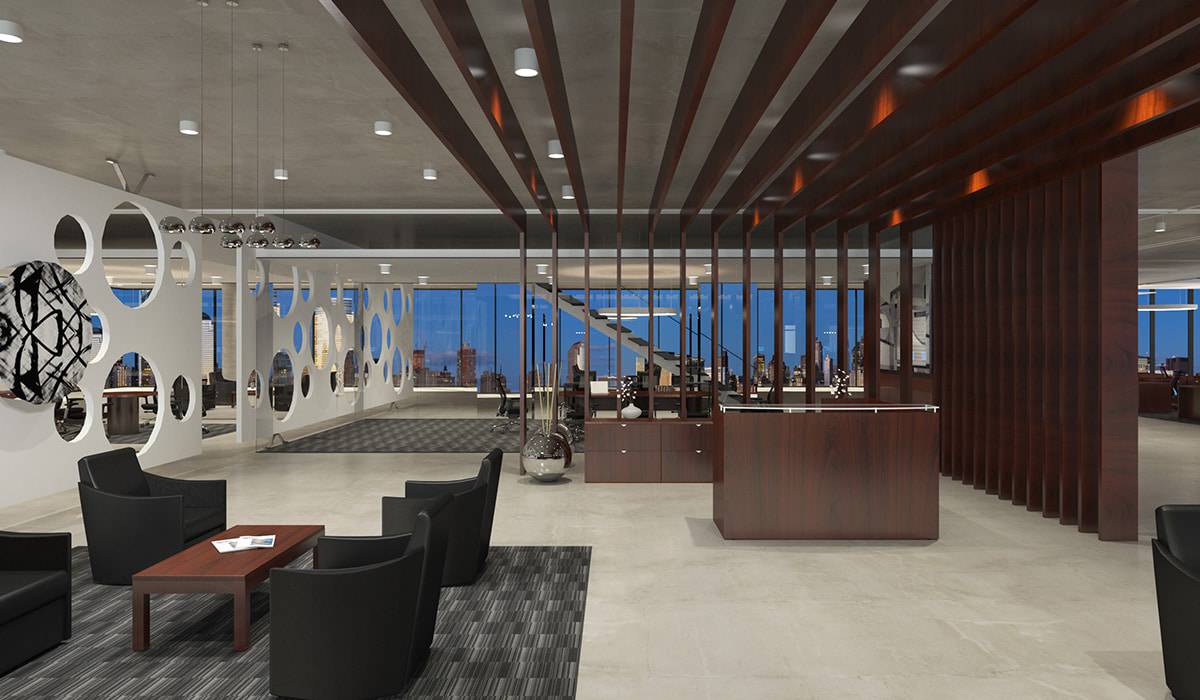
29 Oct Best Lighting for Your Office
People receive about 85 percent of their information through their sense of sight so it’s important for them to have enough light to do their jobs effectively.
The appropriate use of daylight and artificial light can have a strong impact on your employees including their overall health and performance. Ergonomically designed lighting has proven to have a huge impact on motivation.
Note: Just as any other lighting concept, lighting at the working place should be flexible and energy-saving. Any optimal lighting depends on the visual task and requires both a balance of indirect and direct light sources, as well as a balance between daylight and artificial light.
Natural is Best
- A new study from Northwestern University and the University of Illinois at Urbana-Champaign says employees with more light exposure during the work day sleep better and longer, are more physically active and have an overall better quality of life than office workers with limited light exposure.
- “There is increasing evidence that exposure to light, during the day, particularly in the morning, is beneficial to your health via its effects on mood, alertness, and metabolism,” said senior study author Dr. Phyllis Zee, a Northwestern Medicine neurologist and sleep specialist, in a news release. “Workers are a group at risk because they are typically indoors often without access to natural or even artificial bright light for the entire day. The study results confirm that light during the natural daylight hours has powerful effects on health.”
- Additionally, employees without windows in their offices reported a lower quality of life, related to “physical problems and vitality” and more trouble getting a good night’s sleep.
- Since not every room can have natural lighting we must look at our options in artificial lighting as well. Lighting is considered one of the most important factors in ergonomics, but too often this part of an office’s design is overlooked, rushed, or sacrificed for style. Let’s take a look at the different types of artificial lighting available:
General or Overhead Lighting
General lighting provides fairly uniform lighting. An example would be ceiling fixtures that light up large areas. Localized-general lighting uses overhead fixtures in addition to ceiling fixtures to increase lighting levels for particular tasks.
- Lamps can provide indirect lighting and help reduce glare, and lights on dimmer switches can give more control to the amount and the type of lighting. “Daylight” bulbs mimic natural lighting and help their space feel more comforting and productive at the same time.
- To achieve a balance between natural and artificial light and to avoid shadows and glare, place lights parallel to the window and the workplace.
- Dim lighting can strain the eyes and cause headaches, lowering productivity and resulting in employee fatigue. Dim lights also result in drowsiness or lack of focus. However, harsh lighting is just as harmful as dim lighting, causing eye strain and even triggering migraine headaches.
Local or Task Lighting
Local (or task) lighting increases light levels over the work and immediate surroundings. Providing individual task lighting allows workers to adjust personal workstations to their personal needs and preferences.
- “High health care costs associated with back pain and carpal tunnel syndrome have raised awareness about the importance of ergonomics. But there’s more to ergonomics than proper support for the back and wrists. Lighting is as important as any other workplace tool to worker comfort.” 7
- In the absence of good light, people will hunch, squint, and frown over their work, without realizing it. By reducing eyestrain and allowing people to maintain healthy posture, proper lighting can improve productivity by more than six percent.8
- We know that control over many environmental factors, e.g., noise levels, temperature, and lighting, contributes to comfort and enhances productivity.8
- There’s an upfront investment in task lighting, but when used in combination with other types of lighting, it pays off over time. According to the Energy Star Building Manual, “With good design, lighting energy use in most buildings can be cut at least in half while maintaining or improving lighting quality. Such designs typically pay for themselves in energy savings alone within a few years.”10
Ambient Lighting
- Tip: Don’t hang those trendy Edison bulbs over modular workstations. They look cool, but these bulbs won’t get the job done. Instead, implement these trends where they’ll have the most impact on your brand’s social atmosphere or company culture: Common areas such as hallways, cafés, or reception are a good fit for this type of ambiance. 6
Lighting and Computers
- Computers should not be set against a contrasting light source, like a window, or directly beneath the line of sight. Task lighting should have an adjustable positioning, so potential glare or contrast can be easily fixed as needed
- Tip: For desktop or laptop work, well-distributed diffuse light is best. You’ll enjoy fewer hot spots, or glare surfaces, in your line of vision.
Need more help finding lighting that works in your office? Call our experts today at 800.427.5811 or email info@rigroup-us.com
Sources:
- https://www.nationalbusinessfurniture.com/blog/how-to-properly-light-your-office
- https://www.ccohs.ca/oshanswers/ergonomics/lighting_general.html
- https://www.lightingdeluxe.com/workplace-lighting-ergonomics.html
- https://www.ahchealthenews.com/2014/08/18/natural-light-exposure-boosts-overall-well-being/
- https://www.fastcompany.com/3005976/your-offices-fluorescent-lights-really-are-draining-your-will-work
- https://www.inc.com/jeff-pochepan/these-office-lighting-changes-will-improve-your-mood-and-productivity.html
- https://www.hermanmiller.com/research/categories/white-papers/the-case-for-task-lighting/
- Heerwagen, Judith. “Psychosocial Value of Space.” Whole Building Design Guide, 20 February 2007. “http://www.wbdg.org/resources/psychspace_value.php” (accessed November 2012).
- “Green Building’s from the Tenant’s Perspective.”http://wwwdev.transwestern.net/EnergyStar/Tenant%20Benefits%20of%20Green%20Bldgs%208-07%20SM.pdf (accessed December 2012).
- ENERGY STAR Building Manual 2006, p. 4.
- https://www.grainger.com/content/supplylink-office-lighting-standards



















